Pappochelys, the 240 million year old turtle ancestor with cancer
I like turtles.
In many of my paleoart illustrations turtles are either featured prominently, or there are turtles hidden somewhere in the environment for you to find. It’s my way of giving an audience something to relatable for scale and perspective in an otherwise alien environment, and hopefully reminding people that some groups of organisms have been around for a long long time, without changing too dramatically in the process. In this illustration Pappochelys, an ancient relative of turtles, are really easy to find, but one of them is afflicted with a life-threatening disease. Can you figure out which one? (Answer at bottom of post)
My most recent illustration reconstructs the 240 million turtle ancestor Pappochelys in it’s ancient Triassic German pond habitat, but perhaps not for the reason you might expect. As it turns out paleohistologist Yara Haridy at the the Museum fur Naturkunde in Berlin in collaboration with Dr. Florian Wittzman and Dr. Rainer Schoch have described a femur from Pappochelys exhibiting abnormal bone growth – the telltale signs of bone cancer. This is therefor the earliest example in the fossil record of cancer in an amniote. The paper describing this ancient cancer can be downloaded here (unfortunately not open access):
Triassic Cancer—Osteosarcoma in a 240-Million-Year-Old Stem-Turtle
One older example of cancer has been diagnosed in an ancient amphibian, but this Pappochelys specimen is significant because it’s a little further up the family tree, and is so specific in it’s growth patterns that it indicates that some of the fundamental genetic defects that cause bone cancer in modern humans and other animals may go all the way down to the base of the amniote family tree. That means you share some of your most fundamental DNA with this ancient turtle ancestor.
SUBSCRIBE to my YouTube channel for an upcoming video exploring this illustration and the science that went into it in more depth.
Did you figure out which Pappochelys is sick?
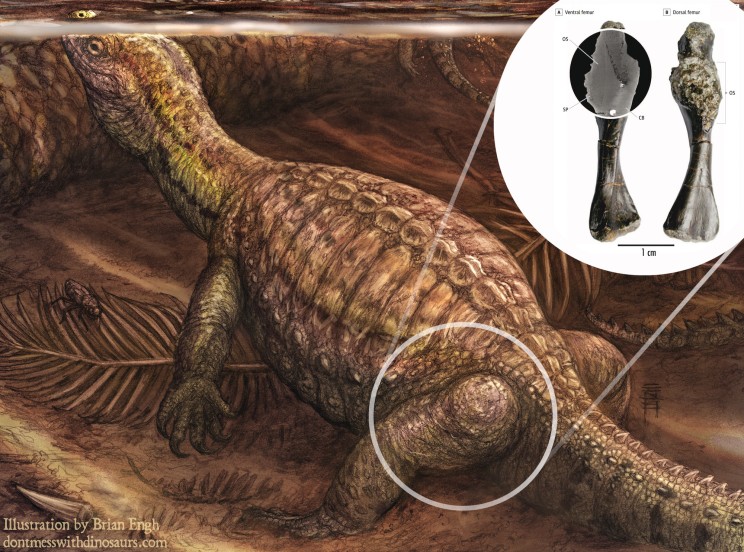
If you noticed the tumorous bulge in this older individual’s thigh, then you spotted the disease. Cancer tends to afflict more mature animals, as our genetic codes are subjected to more abuse throughout our lives, and thus accumulate more mutations, thereby increasing our chances of getting a mutation that causes runaway cell growth, thus resulting in cancerous tumors. Yara informed me that bone cancers tend to spread to the lungs, so we decided to illustrate our afflicted animal as lethargically breathing at the surface, perhaps trying to conserve energy. Although numerous more complete Pappochelys skeletons have been found, only one cancerous tumor has been found so far, so we really don’t know if the little one was killed by the cancer, or survived it to later die of some other cause, such as seasonal drought or some other disease. Predation seems less likely, as the bone preservation is exquisite, and doesn’t appear to show signs of having been passed through another animal’s digestive system. Despite this scary disease however, the relatives of Pappochelys went on to fully develop their shells and diversify into numerous habitats, ultimately surviving hundreds of millions of years to this day.
Thanks for reading, and again, be sure to SUBSCRIBE to my YouTube channel for an upcoming video with lots of turtle footage, further exploring the ideas that went into this piece (and lots of footage of living turtles and tortoises being awesome).
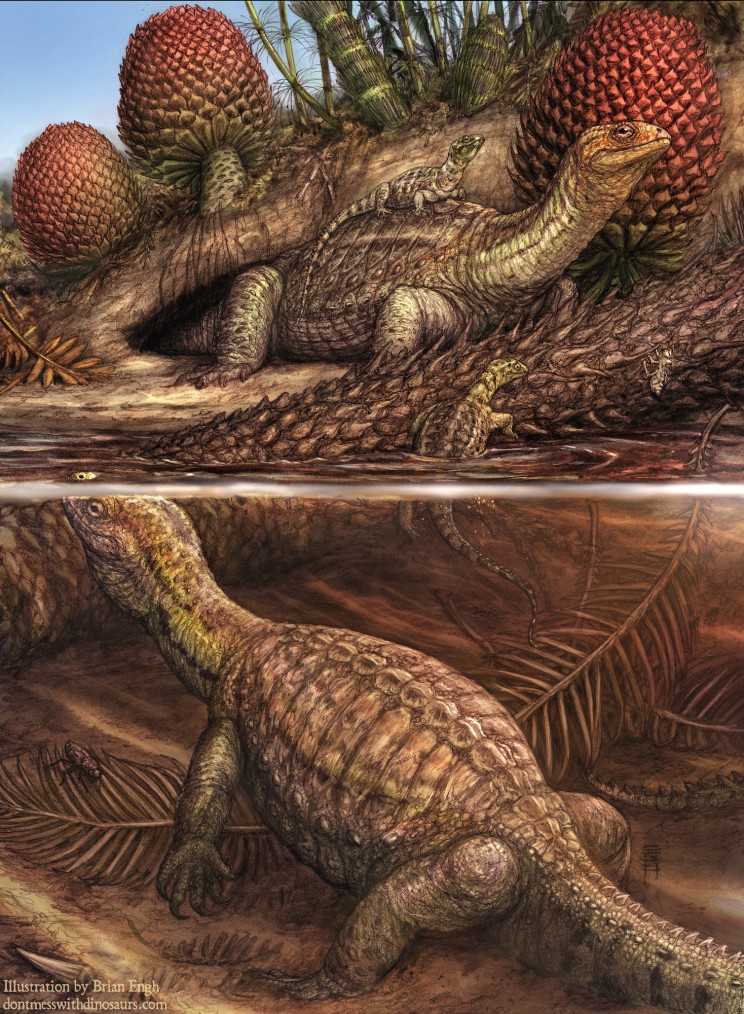
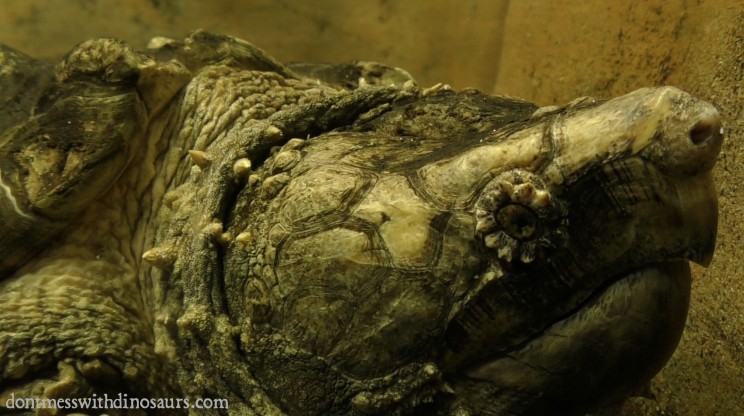

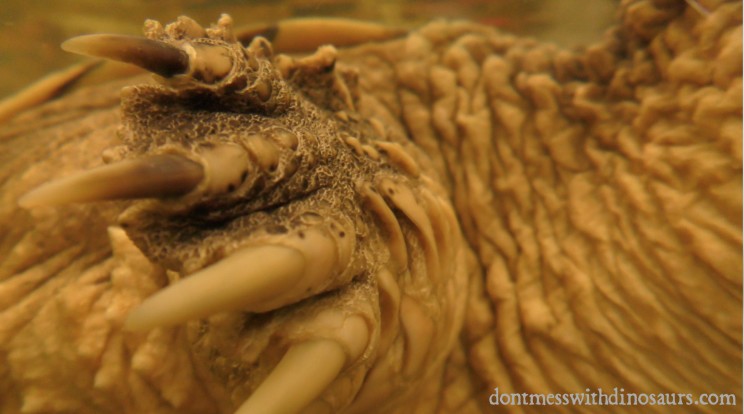
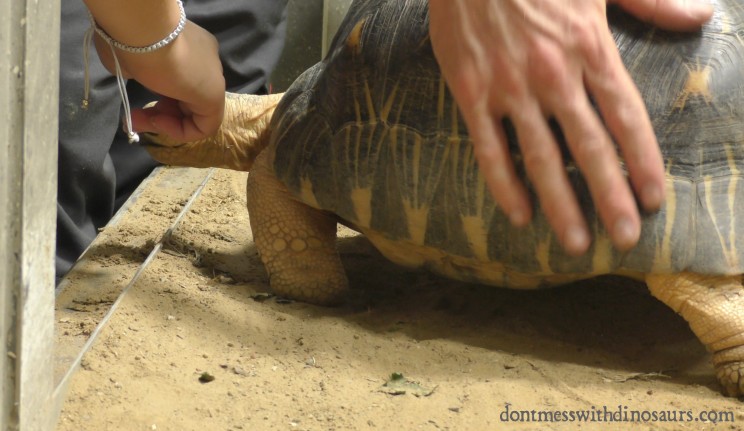

Matt Celeskey on 08 Feb 2019 at 2:57 am #
Great image of this little stem turtle and fascinating research! In awe, as always, at the skill you bring to your compositions and reconstructions. Awesome work!
Lisa on 31 May 2019 at 12:09 am #
It’s amazing just to thiink humans may share something with these ancient creatueres. I love turtles and this was just fascinating. This makes me continue my herpetology studies. The illustration is so accurate with the noticeable stripe across the pupils, the signature turtle eyes! Will subscribe to your channel and your blog. Please more ancient turtles!